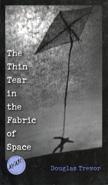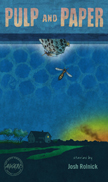The Thin Tear in the Fabric of Space
2006 PEN/Hemingway Finalist
“In ‘Labor Day Hurricane, 1935,’ Douglas Trevor vividly recreates a historical event. While that is the only story in The Thin Tear in the Fabric of Space set in the historical past, many of the other stories juxtapose fact—both historical and scientific—with narration to an engaging effect, one that distinguishes the voice of this new writer.”—Stuart Dybek
“Douglas Trevor writes movingly and persuasively about the ways in which people can be unmoored by loss. The bereaved parents and brokenhearted students in his stories turn to travel and to drink and most of all to books for solace: Thoreau’s Walden, Lowell’s poetry, and even Gray’s Anatomy. Each of the characters is a fully realized human being, a small civilization of memories and preoccupations, and the final paragraphs of Trevor’s stories are among the most knowing and beautiful you are ever likely to read.”—Kevin Brockmeier
The Thin Tear in the Fabric of Space gathers stories about coping with grief, trying to love people who have died, and—more broadly—leaving old versions of the self behind, sometimes by choice and sometimes out of necessity. In each of the nine stories, Douglas Trevor’s characters are forced to face uncomfortable realities. For Elena Gavrushnekov in the title story, that means admitting after the death of her beloved that she still longs for contact with other human bodies. For Peter in “Central Square,” it is realizing that, like his deceased father before him, he is drinking himself to death. Unable to confront his incapacitated mother and the memory of the plane crash that killed his father, Edwin Morris in “Saint Francis in Flint” is compelled to acknowledge that his saintly aspirations are not what they appear to be, while Sharon Mackaney in “The Surprising Weight of the Body's Organs” struggles with uncontrollable outbursts of rage in the wake of her young son’s death.
In moments of great pain and loss, when self-expression seems impossible and terribly useless, the characters in these stories nonetheless discover the tenderness of others. In “The River,” the narrator finds that the friendship he has forged with a French girl with whom he can only just communicate has bred intense, almost intuitive compassion, while in “Fellowship of the Bereaved,” the disconsolate brother of the deceased sister who occupies the empty center of the story uncovers not only anger in his parents but also empathy and humor. As these characters persevere in their own lives, they do so mindful of, and humanized by, the experiences of having seen people they know and love slip unexpectedly into the thin tear in the fabric of space: that quiet chasm that so resolutely separates the living from the dead.






